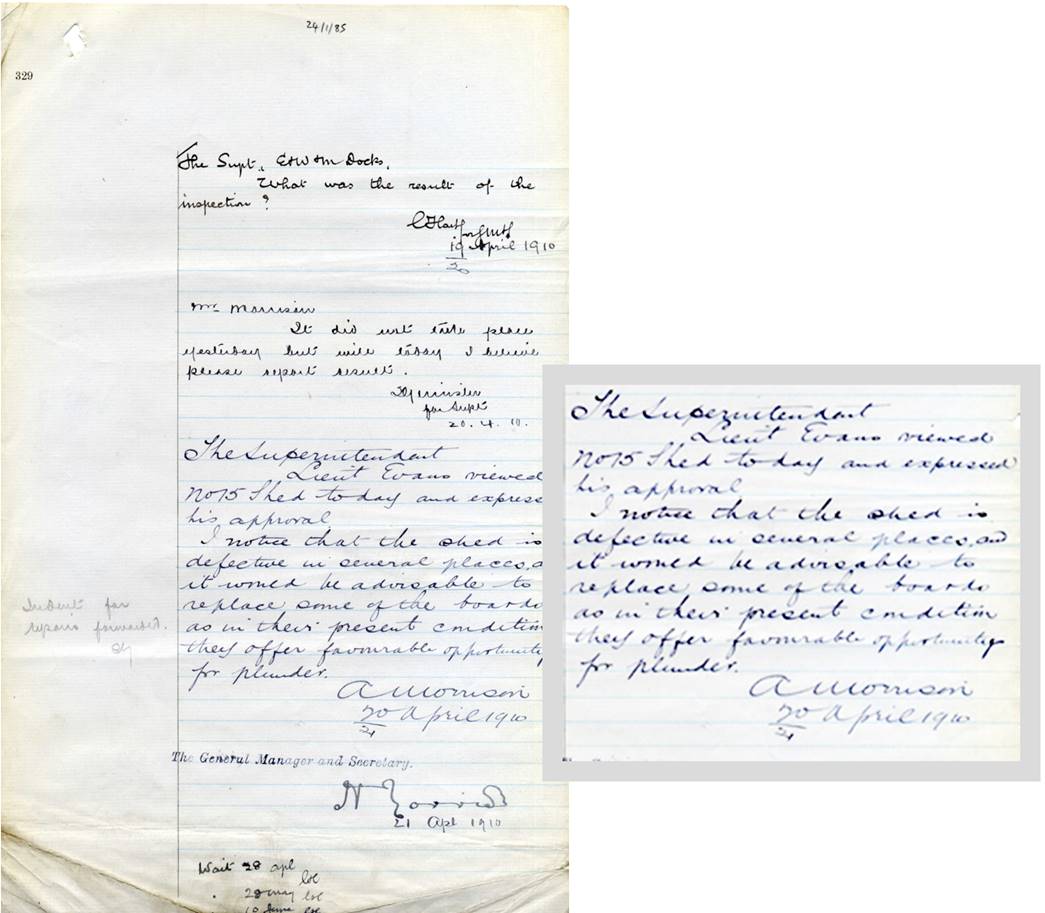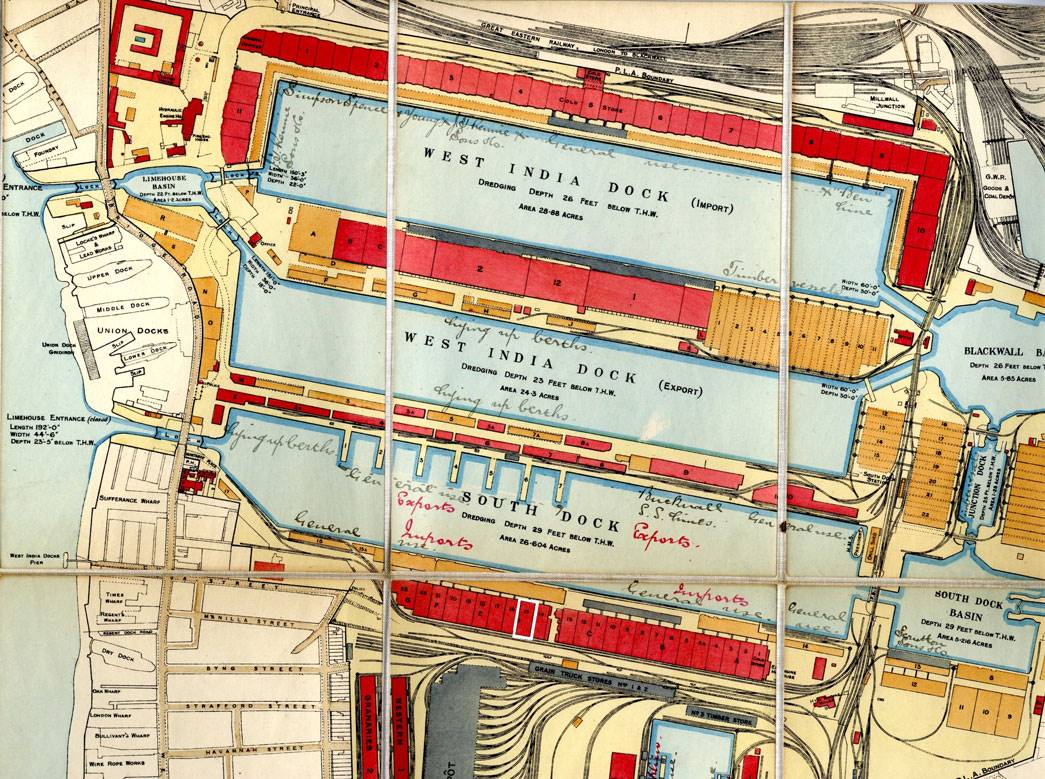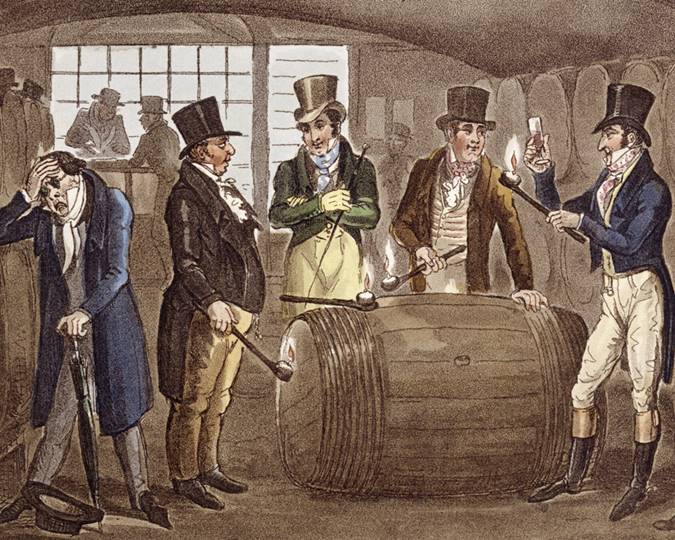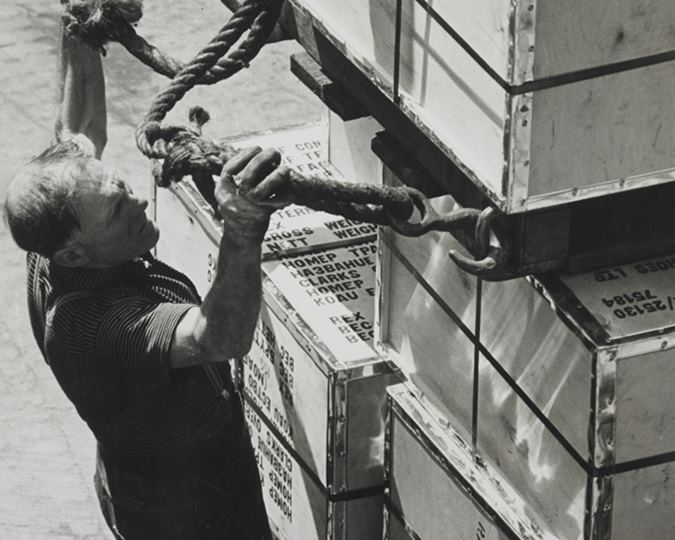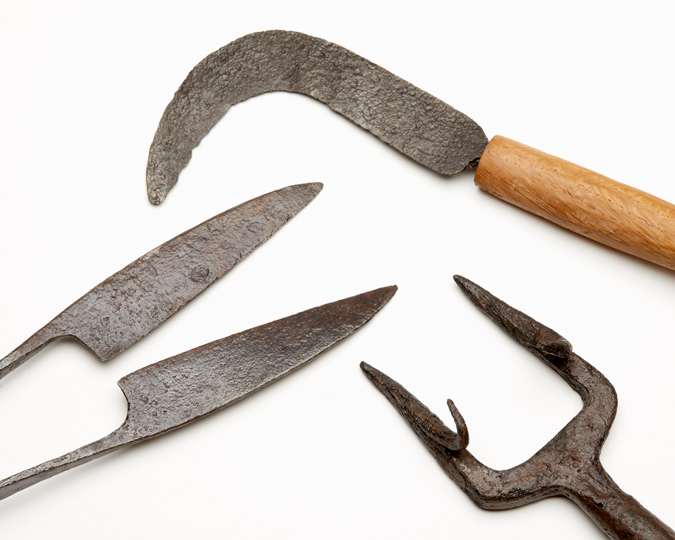The Port of London has seen hundreds of expeditions pass through its docks, and while the danger, glamour and the journeys themselves are sometimes captured through newspaper clips and are kept alive in public memory through journals, it’s the archives that hold and reflect months of meticulous planning that goes into starting these renowned explorations. Here we look at such behind-the-scenes elements that often reveal a lot, particularly so in hindsight, with special focus on Captain Robert F. Scott’s Terra Nova Antarctic Expedition in 1912.
It would not be incorrect to say some of the British Empires’ most famous and significant expeditions originated from or passed through the Port of London, ever since it first opened in the 1st century. And this continued through the establishment of the Port of London Authority (PLA) in 1908. These expeditions or even trade routes include a huge variety of vessels — full of cargo (including exotic animals and buses to Sri Lanka, then Ceylon) and passengers — with different purposes, and such journeys continue today as well.
Records from the PLA Archive, held at the Museum of London Docklands, introduce us to some of this variety, and the role that the PLA itself played in encouraging different types of customer to use its docks.
On 17 January 1912, five men from the famous Terra Nova expedition to Antarctica reached the South Pole. This expedition, led by Captain Robert Falcon Scott, is well known for the competition with Norwegian explore Roald Amundsen (who reached the pole in December 1911) and, of course, its tragic outcome — with the death of all five men on their return journey from the pole.
![(left) Captain Scott photographed in his polar gear in 1911 before the South Pole expedition (Courtesy: Wikimedia Commons); and SS Terra Nova with an inset photo of Scott, c.1910–15 (Courtesy: Library of Congress, Prints & Photographs Division, [LC-DIG-ggbain-10191])](/application/files/2816/4276/9740/01_Polar_expeditions_PLA_1600_Robert_Scott_and_Terra_Nova_ship_WC_-_LOC_-_Public_domain.jpg)
Terra Nova Expedition
(left) Captain Scott photographed in his polar gear in 1911 before the South Pole expedition (Courtesy: Wikimedia Commons); and SS Terra Nova with an inset photo of Scott, c.1910–15 (Courtesy: Library of Congress, Prints & Photographs Division, [LC-DIG-ggbain-10191])
The expedition not only intended to reach the South Pole, but was also designed to carry out scientific research. Taking with them animals such as horses and dogs, food rations, and equipment like sledges and even a motor car, it was clear that the planning alone was a huge undertaking.
What has this got to do with the Museum of London, you might ask?
Well, the PLA Archive gives us a glimpse of how the Port of London was used through some of the records relating to the Terra Nova expedition. In addition to Terra Nova, we know other expeditions to the Antarctic, including Scott’s earlier ‘Discovery’ expedition, the 1907 ‘Nimrod’ British Antarctic expedition and the later 1911–14 Australasian Antarctic Expedition all made use of berthing and stores facilities within the docks. In order to launch an expedition, the huge amount of logistical planning had to take place and, of course, funds would’ve had to have been secured and spent as wisely as possible, which leads us to the letters within the PLA archive.
Down to the letter
The letters held at the museum may not shed light on the most glamourous or dramatic parts of an expedition, but they do highlight the amount of work that takes place before an expedition even sets sail. The letters show that Captain Scott was heavily involved in arrangements, corresponding directly with PLA about which berth SS Terra Nova could use, which sheds could be used by the expedition team, and informing them of dates for loading the ships. One of these signed letters can be seen on display at the Museum of London Docklands. A member of the expedition team, Lieutenant Evans, is even sent to check the shed. Inspecting ‘Shed 15’ at the West India Docks, Evans approved of its use, but when writing to the Superintendent of the Dock, PLA employee A. Morrison, noted that boards in the shed needed replacing to prevent opportunity for “plunder”.
Protecting stores — be it for a prominent expedition or the PLA’s usual customer — was vital. Stealing was just one of the fears. Other hazards might include fire, flood, or breakages, which may explain why Lt Evans was sent to do an inspection rather than taking it on the word of the PLA that a particular shed was suitable for use.
Letters from other expeditions show that the PLA also encountered some stranger requests for help. In June 1911, Douglas Mawson was leading the Australasian Antarctic Expedition, and asked for advice on how best to move 50 Greenland dogs between ships, ready for the departure of his ship ‘Aurora’ in July.
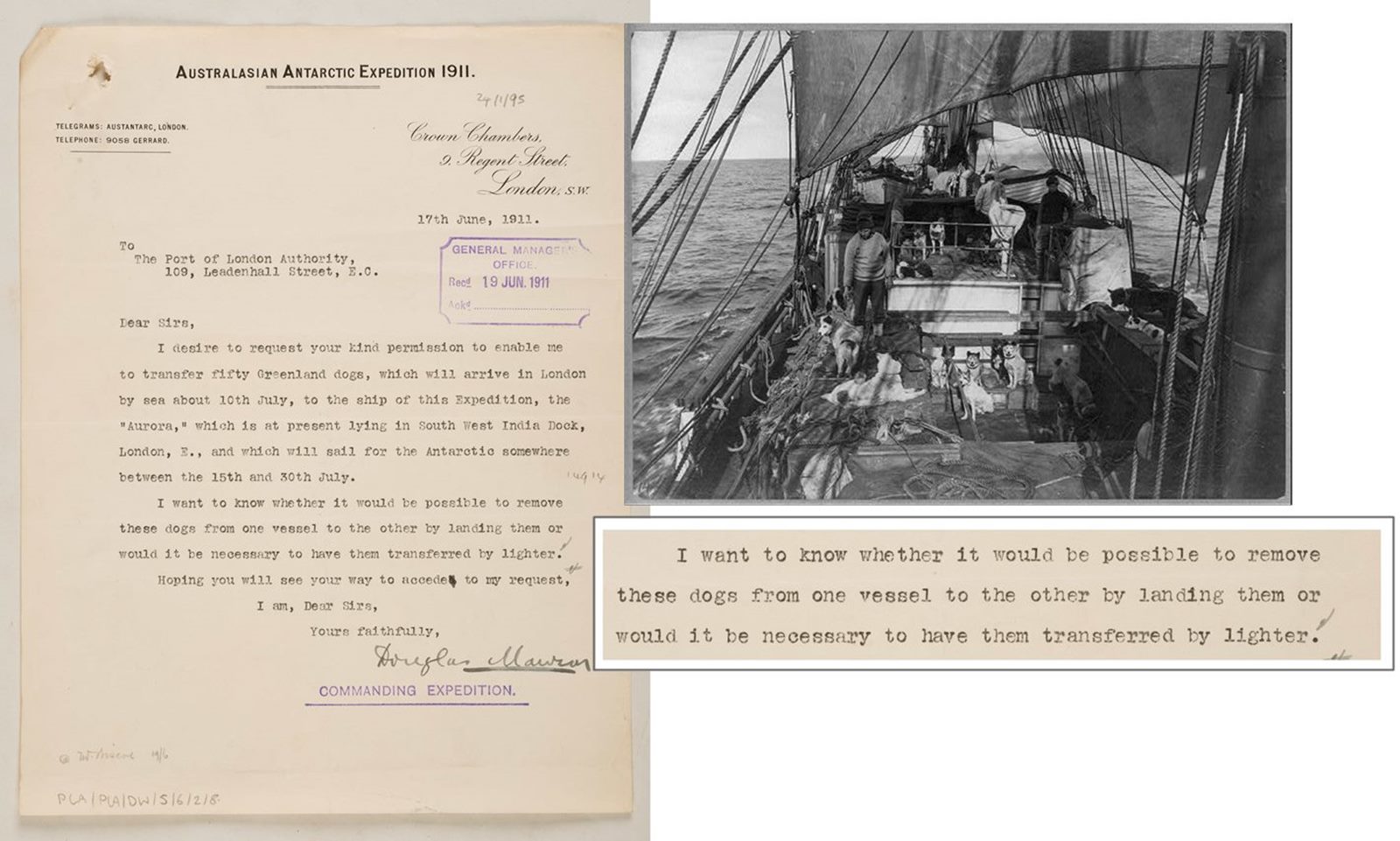
Curious case of the dogs on ship
(left) A letter asking about transferring 50 Greenland dogs at the Port of London for the 1911 Aurora Expedition (ID no.: 2021-08-10_14-10_0083); and (top-right) sled dogs aboard the SS Terra Nova. (Courtesy: Library of Congress, LC-USZ62-42180 (b&w film copy neg.))
Expeditions were mindful of their funds, and the letters show that the PLA did not charge dock dues for the berthing of Terra Nova, although out-of-pocket expenses were expected to be paid by the expedition. While exactly what constituted these expenses is not listed in the records, but ledger entries show that labour charges were passed on to the expedition for movement of stores. The exchange between PLA employees also states that Lt Evans and the crew were also involved in this work, so costs could presumably have been higher if left only to dock employees. There is no correspondence to suggest that the charges weren’t paid, so it is safe to assume that the relationship between the expedition and PLA was a productive one.
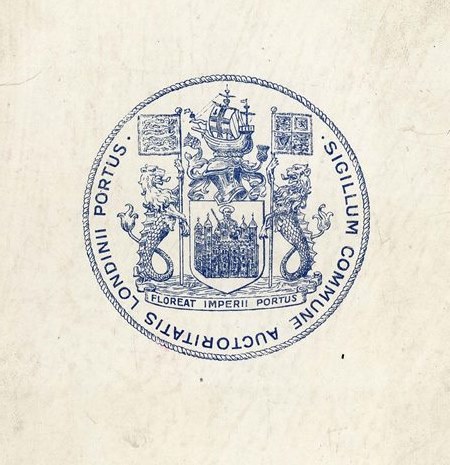
Coat of Arms of the Port of London Authority, taken from the front page of the first annual report, 1910 (ID no.: PLA/PLA/CR/2/1/2/1)
The Terra Nova expedition was a private venture, although quietly supported by the British government, so why did the PLA decide not to charge its usual fees?
Frustratingly, the letter and PLA Board minutes offer no firm insight. It’s likely that as the expedition was viewed as great national endeavour, and one which the relatively new PLA was keen to be seen supporting. Indeed the PLA’s coats of arms included the dedication ‘Floreat Imperii Portus’. Translated as ‘May the Imperial Port Flourish’, it isn’t a great leap to see how British explorers reaching new places, and carrying out scientific research even in uninhabited lands, was wrapped up in the idea of empire, ownership and entitlement.
But such serious and meticulous correspondence, as dry as they might seem, were not without its ‘aha!’ moments, as can be seen in a 1961 article by E.C. Osborn in the PLA Monthly. Osborn recounts seeing the SS Terra Nova depart from the quays, recalling that “she looked too small and frail to be going on a voyage that then seemed formidably long and dangerous”.
Although the ship survived, it did of course turn out to be a dangerous, difficult and tragic journey for all concerned, it nevertheless continues to fascinate and resonate in people’s imagination.
Header image: Terra Nova icebound in the pack digital file from b&w film copy neg. (Courtesy: Library of Congress, LC-USZ62-36616 (b&w film copy neg.)








